Time to read: 10 minutes
Below is a transcript from the video Top 10 Hearing Aid Advances since 2015.
I'm Emma, a clinical audiologist based in Sydney, Australia. In today's video I am going to talk to you about some of the really big things that have changed in the last five or so years in the hearing aid industry.
It's probably needless to say, as it is in any area of the technology industry, that there have been really big advances in the last five years.
We thought we'd make a video that gives you a bit of a synopsis.
Or, if you haven't looked at new hearing aids for the last five to seven years, what kind of things you'll be expecting to hear when you next go see your audiologist to discuss which type of technology would suit you best.
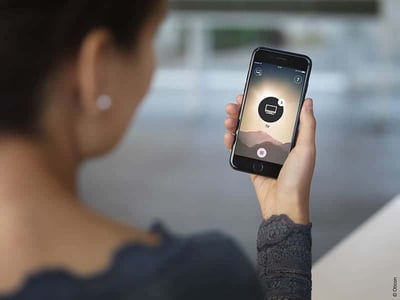 #1 Sound Quality
#1 Sound Quality
Sound quality is what you would expect to improve with the advancements in technology, and it certainly has improved. Generally, we hear from our clients is that with the improvements in the speed of the processing of the hearing aids, for example, they are finding that the hearing aids sound a lot more natural than what they did before.
Other things that have improved in the technology are the faster speeds in which the technology can work. Certainly, music perception and enjoyment has definitely improved.
Obviously a hearing aid is still a hearing aid; it's unlikely at this point, and perhaps ever, for them to sound exactly, or work exactly, like normal hearing does.
But we certainly feel from our clients' feedback, and the research that we're getting, (that today’s hearing aids get) a little bit closer to natural hearing.
#2 Performance In Noise
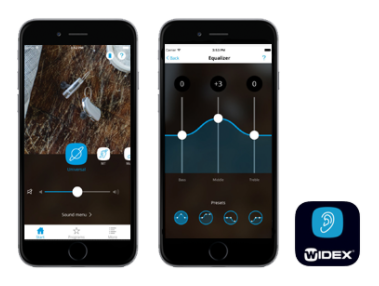 So you would expect that with the advancements in technology, the performance of hearing aids in background noise, (as in helping you understand speech in background noise and making background noise more comfortable), has improved for the majority of people.
So you would expect that with the advancements in technology, the performance of hearing aids in background noise, (as in helping you understand speech in background noise and making background noise more comfortable), has improved for the majority of people.
We see the new technology has definitely helped them hear better in background noise when compared to their previous hearing aids. But there will be some types of hearing loss that causes our clients to not hear speech and noise as well as some others. They will not really benefit from this upgrading technology as much, but it's definitely something worth discussing with your audiologist and to make sure that you have a test to assess how well you hear speech in background noise.
For those who still really struggle even with the new technology available in the hearing aids, there have been some really really big advancements when it comes to the assistive listening devices. In the last few years we're able to offer devices such as the Roger or the Starkey Table Mic. They have really really improved.
So, for those of you who have hearing aids or cochlear implants, and you're still really struggling to understand speech and noise, these assistive devices can really make a huge difference to your quality of life.
#3 Direct Connectivity
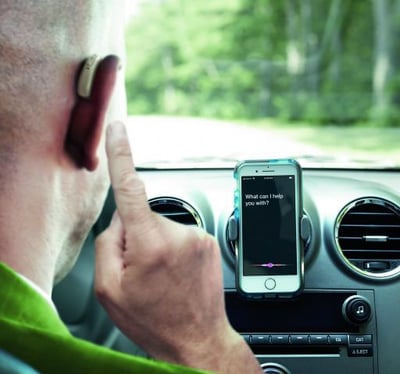 One of the really big advancements that you'll hear audiologists talk about is that the new hearing aids nowadays are much more connected than ever.
One of the really big advancements that you'll hear audiologists talk about is that the new hearing aids nowadays are much more connected than ever.
Five years ago we did have Bluetooth connections, but in order to connect your hearing aids to your phone, you generally needed some sort of intermediate device (or what we would call a streamer) which was often worn around your neck or clipped onto your clothes.
Almost every wireless hearing aid available today no longer needs that streaming device, and you are able to connect to your mobile phones directly, so that's for phone calls, listening to music, podcasts, and any type of audio, as one example.
#4 Teleaudiology (Remote Support)
Another big topic in our industry, particularly in the last year or two, we've become more convenient for our clients simply because we now have access to telehealth or teleaudiology, meaning if you need some fine tuning done to your hearing aids - in some cases maybe quite significant fine-tuning done - you don't necessarily have to come into the clinic anymore.
In fact, through your app and a connection to the Internet, we're often able to remotely adjust your hearing aids in real time, and sometimes not in real time by sending little tune-up files via the Internet for you to use at your own convenience.
#5 Lithium-Ion Rechargeability
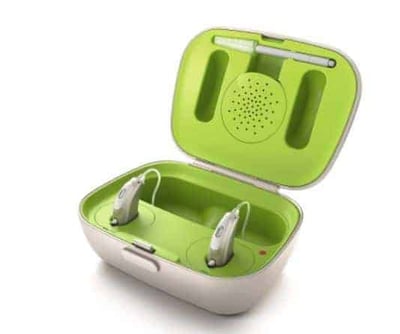 Five years ago rechargeable hearing aids were available, but rechargeability in hearing aids has improved a lot. Although it was available in a number of the manufacturers' portfolios, they were quite limited in their battery life which was not enough for a lot of our clients.
Five years ago rechargeable hearing aids were available, but rechargeability in hearing aids has improved a lot. Although it was available in a number of the manufacturers' portfolios, they were quite limited in their battery life which was not enough for a lot of our clients.
Nowadays, we're pretty much in a position where all of the hearing aids out there, that are rechargeable, are working on Lithium-Ion and are offering plenty of battery life for you to get through the day and then some.
And another wonderful thing they've done with the chargers is a lot of them have allowed you to store some charge. So, if you go camping for a long weekend, for example, and you had no access to power, you wouldn't run out of charge on your batteries thanks to the charger actually holding some power for you.
That has been a really big improvement in our industry. I would say nowadays, the majority of new hearing aid wearers and people replacing their hearing aids, are quite happily going for the rechargeable models.
#6 Water Resistance
 It’s something we tend to forget about a lot of the time, but water resistance has really improved in the last five years. Five to ten years ago, this really was the main reason for hearing aids breaking down.
It’s something we tend to forget about a lot of the time, but water resistance has really improved in the last five years. Five to ten years ago, this really was the main reason for hearing aids breaking down.
Thankfully a number of the manufacturers led the charge, and they've all now jumped on board where they're pretty much guaranteeing that the hearing aids are highly water resistant, usually an Ingress Protection (IP) rating of about IP67 to IP68.
Now when you read the details of that, it might suggest that you could go swimming in the hearing aid - it can be underwater one and a half meters depth for 30 minutes.
This is not actually what you want to be doing with them.
They won't work if you do that; they just will be still repairable by the manufacturers.
Essentially, what it means is that if you're caught out in a heavy rainfall; you accidentally jump in the shower for example; or you're just a very heavy sweater; or work or live somewhere very hot and humid, then your hearing aids are going to survive a lot better.
#7 Automaticity
Hearing aids have become a lot more automatic.
Automaticity in hearing aids has improved in the last five years. This is really thanks to the computer chips within the hearing aids becoming so much faster and therefore able to sample the situation several times a second and figure out what type of program you need for that situation.
So generally, you should be able to put your hearing aids in nowadays and completely forget they're there.
We do have some lovely manual programs you can try for certain situations, but most of the time most of our clients find they just put the hearing aids in and the work is done for them.
#8 Artificial Intelligence/Machine Learning
![]() One of the things that has developed in the last five years is how hearing aids are working in terms of how smart they are.
One of the things that has developed in the last five years is how hearing aids are working in terms of how smart they are.
Hearing aids have become a lot smarter. This is a lot to do with machine learning and artificial intelligence being used.
The connection between your ears, your hearing aids, and your phone, and therefore the Internet, has meant that possibilities for hearing aids is pretty endless.
We have everything, from them learning what you prefer with the artificial intelligence and machine learning, and actually adjusting the hearing aids based on your feedback and your personal situations, to some hearing aids actually being able to use things like Google Translate within the hearing aids.
Also, some of them are even using hearing aids as a fitness device, detecting things like how many steps you were taking in a day.
All this artificial intelligence has basically meant that we are using the phone and all the power that a smartphone has connected to the Internet inside the hearing aids
#9 Fit/Comfort
It probably seems like a minor thing if you haven't worn hearing aids before, but certainly hearing aids have become a lot more comfortable over the last five years.
This has been again developments in technology that has allowed for this.
Hearing aid manufacturers are now using even better 3D printers and scanners in order to use the impressions that we send in of your ears to have a much more accurate mould made for your ear.
This means most hearing aids nowadays, when they come back from the manufacturer for the first time, are fitting your ears really really well, meaning you're just generally more comfortable wearing them day-to-day .
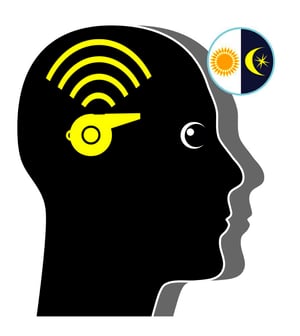 #10 Tinnitus Maskers
#10 Tinnitus Maskers
Another thing that has become commonplace in the last five years is the availability of tinnitus maskers.
Five years ago they were certainly available, but not in as many of the hearing aids on the
market.
Now almost every manufacturer has a tinnitus masker available in their hearing aids.
Tinnitus maskers do not cure tinnitus but in many cases it can really really help distract the brain and settle the limbic system to allow the tinnitus to be more easily managed.
So there you have it. Those are the big changes in the hearing aid industry in the last five years that we have noted at Value Hearing.

